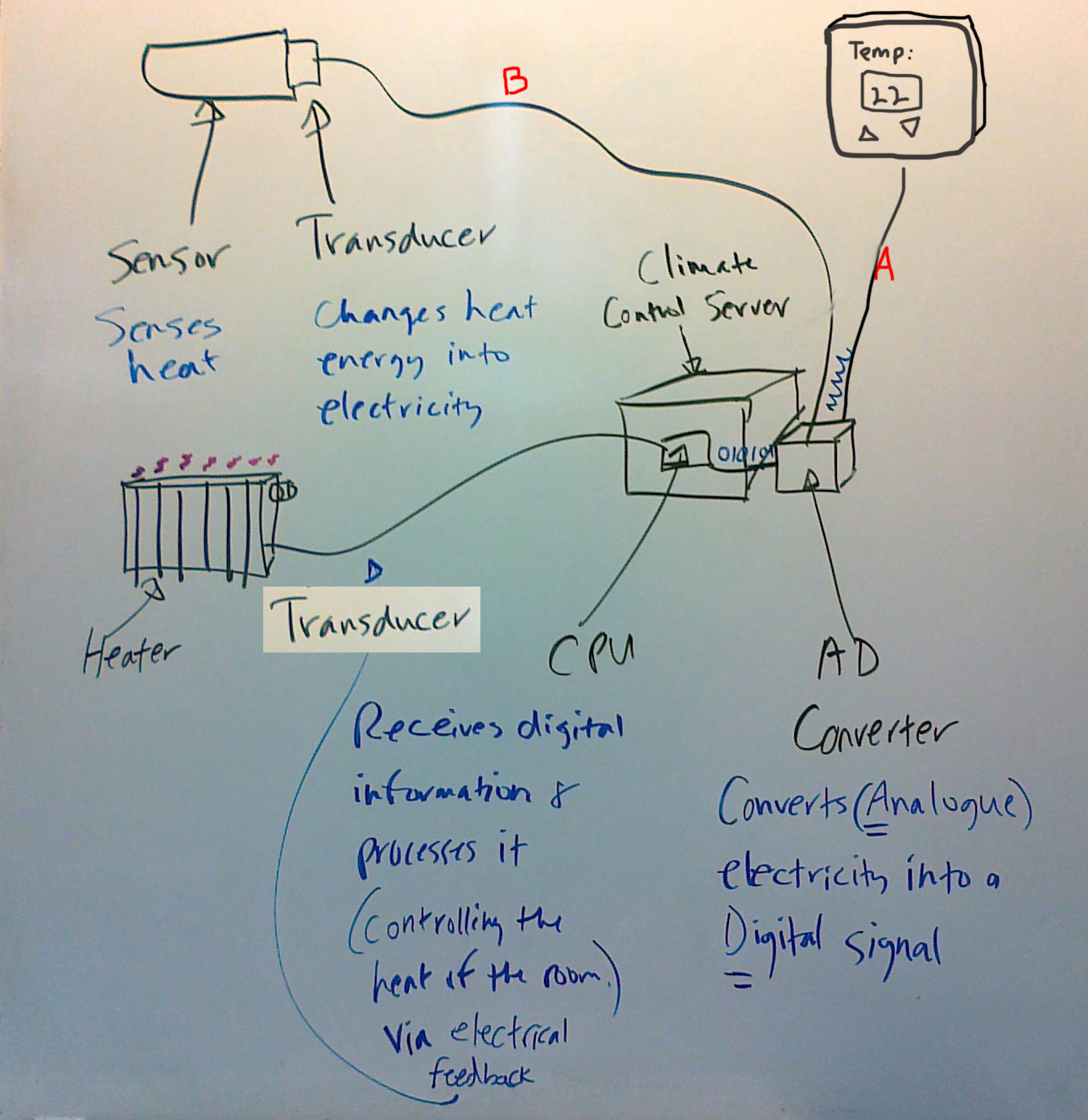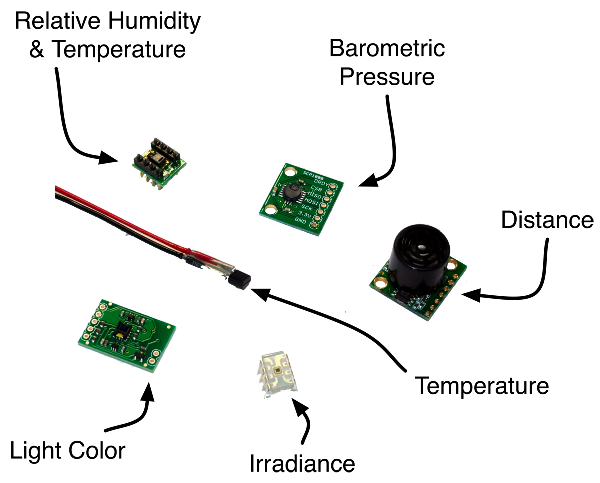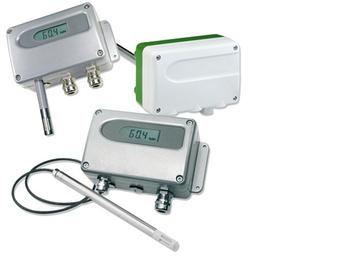7.1.4
Explain the relationship between a sensor, the processor and an output transducer.
Teaching Note:
Technical hardware details are not expected.
Sample Question:
sdfsdfsf
JSR Notes:
Before my "JSR" notes, here are "FP" notes. ("FP, as in Federico Petinella. This is the first time I've ever copied and pasted from a student's response, but there were questions about this assessment statement even after my notes were finished, and this summarizes things very nicely indeed.) I just changed an extra line about an A/D converter where needed.
So this can act as a "Preview":
There are three steps between a physical occurrence and a digital reaction to that occurrence: 1) sensor, 2) transducer, 3) processor. The sensor is what picks up the actual physical occurrence (be it pressure, temperature, chemicals in the air, etc). This physical signal is then passed to the transducer, which changes the physical signal into an electrical one. That electrical signal can then be converted to digital with an A/D (analogue/digital) converter. The digital signal is then sent from the A/D converter to the processor, which analyses the signal and then decides what to do based on whether or not it meets the reference input.
And now here's a "JM" notes, so the second time ever, but again, there are just some great answers that you guys have come up with; this one is more concise:
A sensor is a device, which will measure the physical quantities, such as sound waves and pressure. A transducer will change the physical quantities into a an electrical signal, which can be worked with later. An A/D (analogue/digital) converter sends the digital signal to the processor, which then finally decides what next to do with the data.
(Now on to my JSR notes.)
Relationship Between Sensor, Processor and Transducer
Temperature Sensing Example in terms of the parts

Sensor Control Part 1 - Sensing
A Review (from 7.1.2) of Sensors:
A sensor is basically a device that detects or measures a physical property, records it and converts it into some kind of a signal that is sent on to be used in some sort of fashion (more on this process below.)

Various sensors
Sensor Control Part 2 - Transducing
New (here in 7.1.4) Transducers:
A transducer, in general, is any device that converts a signal in one form of energy to another form of energy (not just sensors). Energy types include (but are not limited to) electrical, mechanical, electromagnetic (including light), chemical, acoustic and thermal energy.
[So any device which converts energy to a different form can be considered a transducer. Electricity producing examples include piezoelectric devices (pressure on crystals yeilding electricity), microphone (sound to electricity) and photoelectric cell (light to electricity). And another primary use of transducers is as part of actuators - the part of a machine that usually moves another part - the actuator accepts energy, and produces movement (action). The energy supplied to an actuator might be electrical or mechanical (pneumatic, hydraulic, etc.). An electric motor and a loudspeaker are both actuators, converting electrical energy into motion for different purposes.
In all kinds of sensor systems, a sensor is used to detect a physical parameter of a particular form, and the transducer part of the sensor converts that form of energy to an electrical signal. For example, a pressure sensor might detect pressure (a mechanical form of energy) and convert it to an electrical signal which travels to the processor.
And in a closed loop kind of sensor system (refer to 7.1.5), there will also be electrical communication back to the area being sensed, so an output transducer will have to be used again; this time for converting electrical energy from the processor back into some sort of phyisical energy, like the energy used for opening a latch, or turning on a faucet etc.
Note: Often what we refer to as a "transducer", (or indeed a "sensor" - see the folowing section) is actually both a transducer and a sensor. Often, such small, "combo" devices will both detect (i.e. are sensors) and create action (i.e. act as actuators/transducers). For example, a typical ultrasonic "transducer" switches back and forth many times a second between acting as an actuator to produce ultrasonic waves, and acting as a sensor to detect ultrasonic waves.
Clarifying the general vs. specific meaning of "sensor" (and the role of the transducer)
Using its general meaning, a "sensor" is the complete assembly required to detect and communicate some sort of information. It uses, as part of it, a transducer to set up and do the communication part.
And using the specific meaning of the word "sensor", the sensor part of the full sensor assembly is specifically what detects the particular kind of physical energy, whereas a transducer's role is to convert the sensed energy into into an electrical signal, and pass it on.
Sensor Control Part 3 - Converting Analogue signals to Digital signals
A bit more on Analogue vs Digital & a Review (from 7.1.2) of ADC,
The first thing to appreciate fully is the difference between analogue data and digital data. This is not necessarily part of this assessment statement, but it enters into other parts of the curriculum. Furthermore it's both an interesting, and a core concept, with regard to digital information.
Analogue data is real world data, be it sound, or heat, or color, or weight, or anything at all that can be sensed and measured. It is what is referred to as "continuous" data, in that it alters in a real-world, continuous way. So, for example, if a rock is thrown up into the air and falls down, it does so in a real, continuous way; it does not fall in discrete steps. The number of divisions in its height from the ground as it falls is infinite. Another classic example is the rising and lowering of an audio turntable needle as is rides along a rotating vinyl LP. The number of divisions between low and high points, is infinite; it rises and falls in continuous, infinite steps. (Which is why an old-school turntable produces better fidelity sound than almost any digital playback device.)
So in the heat sensor example above, the sensor does not heat up or cool down in discrete steps; rather it heats up or cools down in a continuous, analogue way. And the (analogue) electrical signal it passes on as a result of this, fluctuates also in a continuous way, with infinite divisions between one point and another of rising and lowering current.
Digital data, on the other hand, is data which has been translated into a digital representation of 0s and 1s. So 0000 0110 might represent one particular height, or sound, or temperature, or whatever, and 0000 0111 represents the next discrete step up in that measurement. But note that there is no recordable "in-between" between 0000 0110 and 000 0111. In terms the measurement, it can only be one or the other; there are no infinite recordable possible divisions between them, as there actually are in real life. Certainly we can increase the numbers of samples we take, and the range of values that those samples can be within (by increasing the number of bits used to represent each sample), but the representation can never be infinite/continuous.
Sensor Control Part 4 - Processing
A Review (from 7.1.2) of Processors:
A processor is the logic circuitry that responds to and processes the basic instructions that drive a computer or other digital device. We can look at how they deal with various situations through examining the code that drives them, or indeed look at (or produce, as is often asked on IB CS papers) an algorithms to describe this. For example:
desiredTemperature = value read in from control dial
lowerTemperatureLimit = 2 degrees less than desiredTemperature
higherTemperatureLimit = 2 degrees greater than desiredTemperature
if ( temperature < lowerTemperatureLimt ){
turn off air conditioning
turn on heater;
else if ( temperatuer > higherTemperatureLimt ){
turn off heater;
turn on air conditioning;

Summary of Sensor Control
So as part of any given digital sensor device, what the sensor senses is converted into electricity by the transducer; this electricity, in turn can be converted to a digital form by an A/D (analogue/digital) converter. The specific circuitry of the microprocessing chip (the "processor") is built to be able to interpret these digital signals and report back to a user the changes in the state of what it is observing, or do some other useful thing with this information.
Or in one short sentence:
A sensor measures a physical quantity, and then a transducer converts that result it into an electrical signal that can be converted to a digital form and processed.
Example Question
A variation of a question from the May 2018 Paper 1
_________________________
14. A number of devices in and around the home can be operated by control systems.
A home owner wishes to install automatic lights to illuminate her yard. These lights will automatically turn on at sunset and turn off at sunrise.
- Draw a diagram and discuss the hardware involved in this system, detailing the relationship between the various parts. [4]
_________________________

The light sensor detects light. The transducer converts the light energy into an electrical signal, and it travels to the A/D converter. The Analogue to Digital converter converts the electircity from an analogue form to a digital form. The microprocessor takes this digial signal and uses it to determine if the ambient light is below a certain level, and if so, it turns on the outdoor lighting.
Best content in compSci | Diigo - Groups
